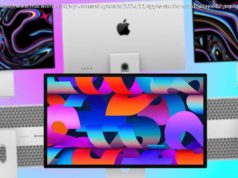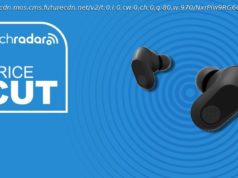The Creators Update is out, but there’s another one: the Windows 10 Fall Creators Update. Read the latest news about the next big update.
Windows 10 (reviewed) was released on 29 July 2015 and is being updated regularly. The first big update was the Anniversary Update on 2 August 2016. Next came the Creators Update in April 2017. Microsoft has announced another one: the Fall Creators Update which will be out in autumn 2017.
If you want to get Windows updates earlier than the general public, you need to sign up to the Windows Insider Programme. Here’s how to get Windows updates early.
Whether it will be called Autumn Creators Update in the UK is unknown, but since ‘fall’ means autumn, we expect it to be release around September time. Microsoft hasn’t officially said anything but it did show this slide at a developer event earlier this year:
As ever, the update will be free to all computers running Windows 10.
The reason it’s called the Creators Update again is because it will contain more ‘creative’ features. Hopefully including some of the things Microsoft promised in the April Creators update but which never materialised.
This will do a similar thing to Memories on an iPhone, in that it will automatically create edited videos from your photos and videos. But on top of this, you’ll be able to use Windows Ink (if you have a touchscreen device) to draw or write on the video, and even anchor your scribbles to a person or object so it automatically moves with it.
There’s mixed reality too, so you could – as in Microsoft’s example above – turn a football into a fireball using the same anchor and tracking mechanism.
Timeline is an improved ‘Task View’. When you click on the Task View button you’ll see not only the current apps and windows you have open, but you can scroll down to see the stuff you were working on previously that day, or even months ago.
This will also work across your Windows 10 devices because the information is stored in Microsoft Graph. This is what Microsoft calls an « intelligent fabric that helps connect dots between people, conversations, projects, and content within the Microsoft Cloud ».
In practice, it means you can do whatever you need to do no matter which device you happen to have picked up.
Continuing on the same theme, the Fall Creators Update will use Cortana (and the cloud) to let you carry on doing something on another device. This will even extend to Android and iPhones / iPads – assuming app developers build in the functionality.
Not quite a return of Placeholders, but this change means you can see which files are in your OneDrive without actually having them stored locally on each Windows 10 device.
Currently, you have to choose which OneDrive folders and files are synced, and it means that those you don’t sync aren’t shown when you browse your OneDrive folder on that PC or laptop.
WindowsCentral spied a screenshot on the official Windows blog before it was removed, and it shows what looks like a revamped Action Centre.
It has shortcut toggles to common features as the Action Centre does right now, but also includes things like a brightness control.
Rumour has it that the Action Centre will remain, but be dedicated to notifications: the ‘Control Centre’ will be new and separate.
We all use the clipboard for copying and pasting, but in the Fall Creators Update you can copy and paste things between connected devices, whether you’ re on a Windows PC or your phone. Basically, it’s a cloud-based clipboard.
Part of the update will be some graphical changes, and these are called Fluent Design (previously codename: Project Neon) .
The changes won’t be major, but will introduce blurring (called « Acrylic ») and animations that make things simpler and more consistent. Ultimately, it’s a lot like the Aero interface introduced in Windows Vista, and the blurring and animations you see in iOS, such as when you scroll up and emails or text run behind a title bar, and when the title bar shinks and even disappears when you scroll down a web page.
The updates will change the look and feel of some of Windows 10’s native apps, such as Groove, shown below, but will also be opened up to developers. The whole idea is to make a modern interface which will work across all Windows devices, including HoloLens as well as phones and tablets. However, unlike the mistake that Microsoft made with Windows 8, such changes shouldn’t detract from the user experience on PCs and laptops.
Assuming your PC is already running Windows 10, you should receive the Creators Update automatically, since it’s an update and updates in Windows 10 are installed when they’re available. However, you can check for updates manually by going to Start, Settings (the cog icon) , Update & security, Check for Updates. The Creators Update will be available in the same place.
You should see a message saying, « Good news! The Windows 10 Creators Update is on its way. Want to be one of the first to get it? » or similar. If not, wait until it has finished checking for available updates and then allow them to be installed before checking again.
You can start installing the update manually. To do this download and run Microsoft’s Update Assistant. This will walk you through the process, including checking if your system is compatible.
Alternatively, you can use the download tool from Microsoft. Choose Create installation media for another PC, then select the language, edition and whether you want 32- or 64-bit. You can then use the tool to copy the files to a bootable USB drive or a bootable DVD. Once this is complete you can boot from the drive or disc and follow the on-screen instructions to install the Windows 10 update.
Here’s a selection of the main features in the update which came out in April 2017.
Hoping to get a bigger share of the global web browser market, there are updates to Edge including support for 4K Netflix, ebooks and new tricks for Cortana.
Microsoft has given developers of add-ons access to more features and functions in the browser and – with a bit of luck – we’ll start to see the library grow. Currently the list of Extensions is relatively short.
Another update to Edge is the ability to save and restore groups of tabs. The idea behind this is to reduce clutter and improve performance for people who tend to have a lot of tabs open. Instead of keeping lots of pages open, you can save a group of them, ‘set them aside’ and then return to them later on without having to search through your history or try to remember what you were looking at. It’s not a killer feature for everyone, but for some it will be a compelling reason to use Edge over another browser.
3D content was a focus for Microsoft, but much of that is missing in the Creators Update. What you get is a new version of MS Paint.
You can now create 3D shapes in Paint and share them directly with your social followers, or SketchUp network – better still, print them directly on your 3D printers, nifty. Here’s a brief look at how it works:
Android, iOS and Amazon’s mobile operating systems all have a feature which reduces blue light at night, so it’s not too surprising that Microsoft has added this feature to Windows.
Windows now has the ability to sell you and let you read ebooks (in the Edge browser) .
App throttling control gives priority to the apps in focus, and deprioritises background apps so they don’t use up too many of your computer’s resources.
The Settings app has a new Gaming section, which will consolidate all the game-related Windows settings into one easy place. Most of those will be familiar, but there will also be two major new features:
Game Mode prioritises the game that’s running and devote as much processing time, RAM and other resources as it can to making it run as fast as possible. For example, if you’re running a multi-core CPU, it might delegate background tasks to two specific CPU cores, leaving the others to focus entirely on running the game.
The aim is to boost overall game performance, especially frame rates, which should be both higher and more consistent.






